In reply to Kramer :
That's awesome! Growing up in IL it was pretty common to see an old steam tractor or two at the summer fairs. They're pretty incredible machines.
In reply to Kramer :
I got to drive an S.W. Wood 16hp steam tractor when I was a kid. It is believed to be the only S.W. Wood 16hp in existence, one of only two S.W. Wood tractors still in existence (the other is a 12hp, and then there are a handful of stationary engines) and the only operational S.W. Wood tractor (the 12hp is apparently sidelined with sever boiler troubles) My family went to a tractor show that this guy holds at his farm and he was towing wagon rides with this tractor. He saw me in the wagon and waved for me to come up on the footplate and steer the tractor for him. And blow the whistle. No matter how old you are, any time you get to yank the cord on a steam whistle, it's a real treat.
slowbird said:This gondola has seen some E36 M3.
https://www.flickr.com/photos/john_leopard/16675793950/
What are those stacked up square things? They appear to be rifled.
Recon1342 said:In reply to 914Driver :
Those kinda look like ingot molds...
That would be my guess as well.
The car is a Virginian "battleship" gondola, although it looks like the top third has been cut off. Virginian built them in the '20s and '30s and they were about 30 feet longer than regular gondolas, rolled on 3-axle trucks instead of the usual 2-axle trucks, and had all-steel construction. Most of them were retired shortly before Virginian was merged into N&W, although some made it into the N&W era.

In reply to slowbird :
The dual sealed-beams and rectangular front windows put that as a late model EMD SW1; but the notch in the hood right in front of the cab is an early SW1 spotting feature. I'd guess it's an early model that was later updated with the newer headlights and front glass...
and since it is a switcher with a chicken on it, I'd say it's probably also a slow bird...
Monticello Railroad museum has acquired C&IM EMD RS1325. One of only two RS1325's ever built. They also acquired an Illinois Terminal SW1200.
In reply to LS_BC8 :
Oh no, I've now learned about another rare locomotive and will have to acquire one for my layout. I've found a resin-body kit for one on ebay just now. Nobody had better buy it out from under me, okay? ![]()

LS_BC8 said:Monticello Railroad museum has acquired C&IM EMD RS1325. One of only two RS1325's ever built.
Oooh, that's cool. The RS1325 is a rare example of a complete sales flop by EMD. Its also absolutely hilarious that EMD intended it for passenger usage and yet the only railroad to buy them was a freight-only line who ordered them without steam generators.
For those not familiar, in 1960, EMD decided to offer a locomotive called an RS1325. It used a SW7/SW9/SW1200 switcher-style hood and cab, with a 1325hp 567D1 V12, but on the longer frame from a road switcher, and then was supposed to have a tall road switcher-style short hood behind the cab. That short hood was supposed to contain a steam generator. The concept was that it could be used on branch line/local passenger service, or be used for assembling passenger trains at terminals since it could preheat the passenger cars. The market of locomotives for branch lines was never what the manufacturers thought it was (most railroads preferred to just use old outdated equipment rather than purchase new equipment for branch service) and EMD had tried offering the NW5 as a passenger terminal switcher in '46 and had only sold 13 of them (10 to Great Northern), so the RS1325 seemed doomed from the start.
The only line to buy the RS1325 was Chicago & Illinois Midland. Hilariously, they didn't offer passenger service, so they ordered theirs without steam generators, and as a result they had a low hood off of a GP20 instead of the high hood that they were designed for.
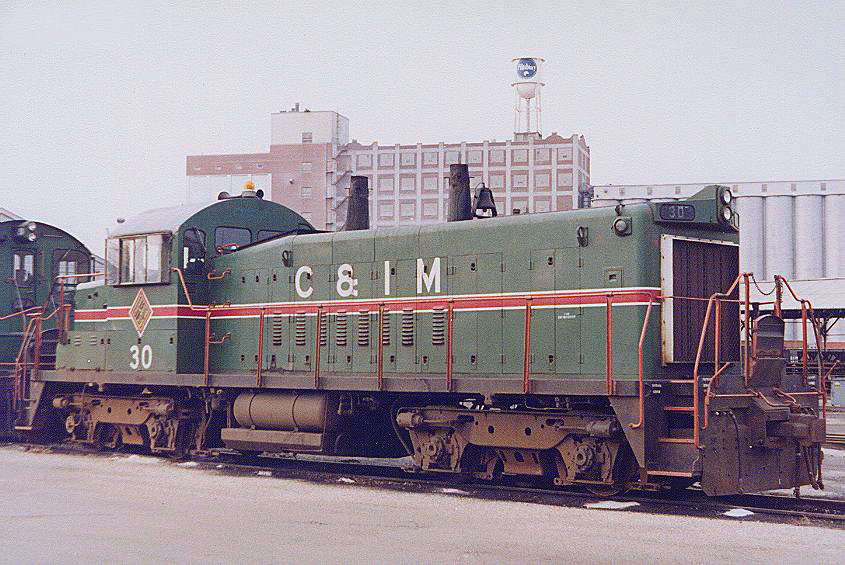
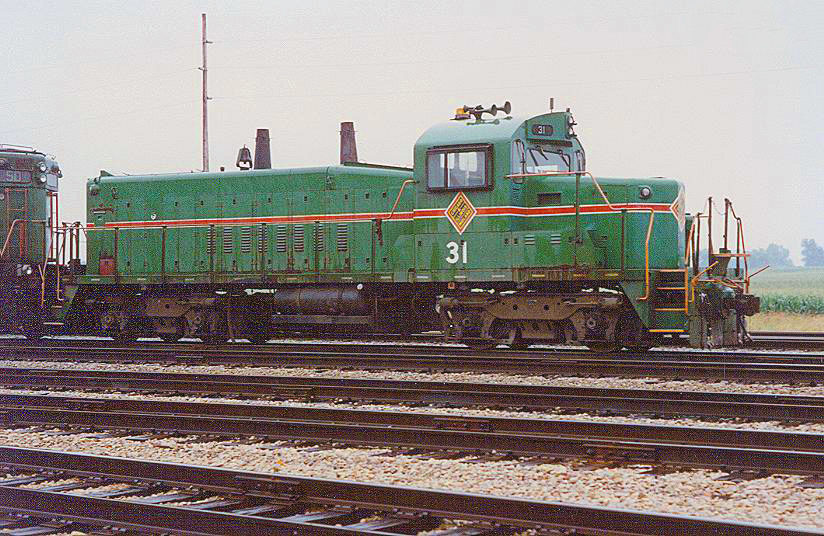

When Genesee & Wyoming bought out C&IM, the C&IM became Illinois Midland Railroad and they were repainted into G&W's orange, black and yellow. One stayed with IMRR and the other went to Atlantic & Western.
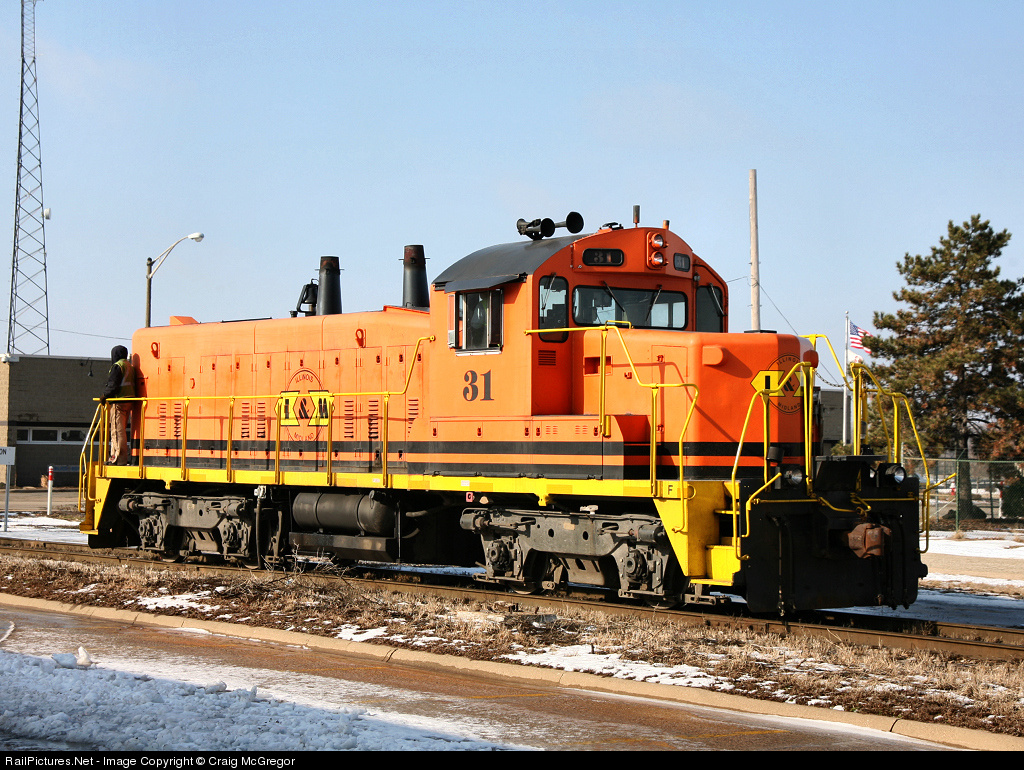
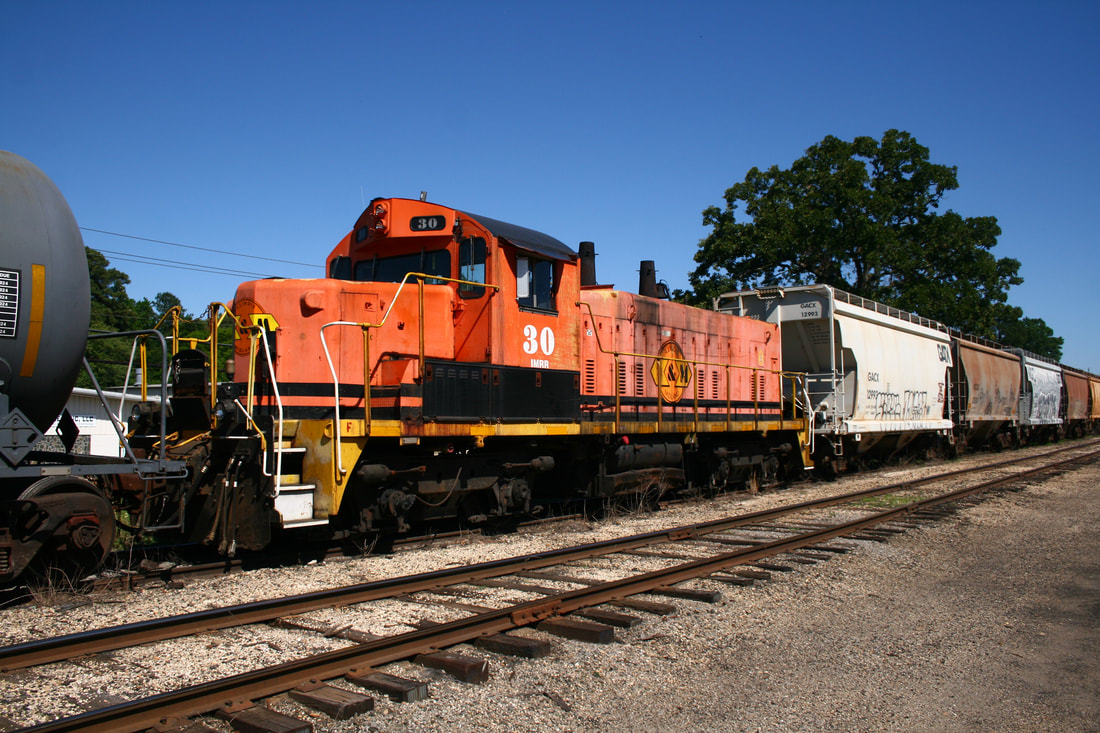
If optioned with a high hood, the RS1325 probably would have looked a lot like the earlier NW5. Great Northern's 10 hung around into the Burlington Northern era, being used at car and locomotive shops for spotting equipment. They were originally purchased by GN to assemble passenger trains at terminals and keep the cars heated during that process.
Whoa, here's a surprise. Canadian Pacific apparently had The Empress, unstreamlined Royal Hudson #2816, steamed up at the Ogden shops in Calgary today. This is the first time in 10 years that she's been spotted moving under her own power. Back in 2010, when Hunter Harrison stepped in to take charge of CP, he said that "steam had no place" on his rails and had the #2816 parked, even though CP had just done an extensive overhaul of it in 2009. After Harrison left, his protege Keith Creel took over and has held a similar stance. No word on what they were doing with #2816, but perhaps they're getting ready to do some PR work.

Also, a video of it moving through the yard.
Well, the word is out. Bit of a letdown. Since the regular CP Holiday Train has been cancelled by Covid, they are going to make a Holiday Train video using #2816. But they are adamant this is a one-time deal and she won't even be leaving the yard.
Let's not forget the BL2 that EMD built, another oddity. I guess my favorite of the "handful" builds is the EMC Model 40 of which the majority went to the military.
In reply to LS_BC8 :
The BL2 is one of my favorite diesels ever, just because it's such an oddball...

In reply to Recon1342 :
There were a pair of them for sale recently, in seemingly good running condition, for not an unreasonable amount of money.

You can't see the price, but they're asking $82.5k for each of them. So, for basically C8 money you can own a real train instead. Link
In reply to LS_BC8 :
There was also a BL20-2. It was an attempt at a rebuild program. BN sent them three GP7s, because they were interested in having them overhauled and upgraded. EMD came up with the BL20-2, but the program was too expensive, and by the time EMD built them, BN had already decided to have all their old GPs rebuilt by Morrison-Knudsen instead and refused to take delivery of the three. EMD ended up using the three as demonstrators for 2 years but never generated any additional orders and ended up putting them into the leasing company.
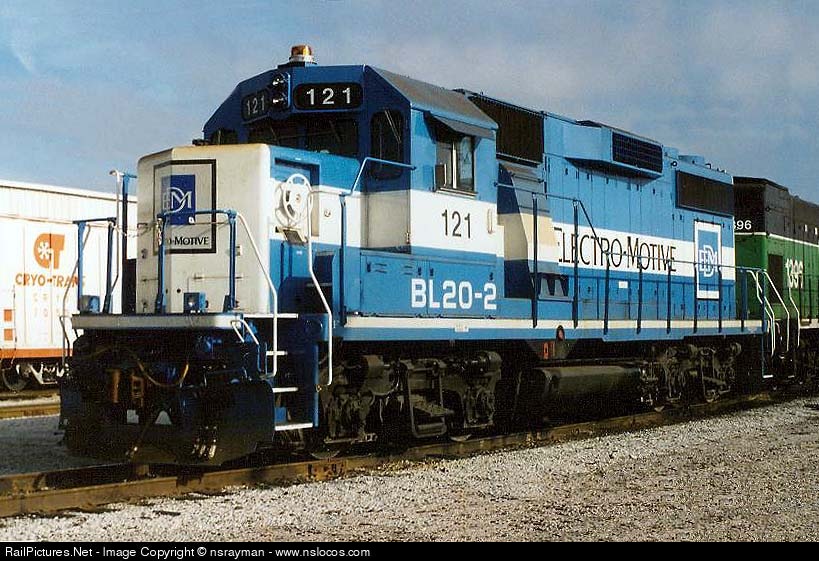
Pete Gossett (Forum Supporter) said:In reply to Recon1342 :
There were a pair of them for sale recently, in seemingly good running condition, for not an unreasonable amount of money.
You can't see the price, but they're asking $82.5k for each of them. So, for basically C8 money you can own a real train instead. Link
Unfortunately, I don't think it'll fit in my garage...
Recon1342 said:Pete Gossett (Forum Supporter) said:In reply to Recon1342 :
There were a pair of them for sale recently, in seemingly good running condition, for not an unreasonable amount of money.
You can't see the price, but they're asking $82.5k for each of them. So, for basically C8 money you can own a real train instead. Link
Unfortunately, I don't think it'll fit in my garage...
What about in the lawn? I'm sure the neighbors won't mind.
Those were originally Bangor & Aroostook BL-2s, who loved those things. They are marked for SNC, which was Saratoga & North Creek, a shortline in the upper Hudson River area of the Adirondacks. It was part of Iowa Pacific Holdings, who owned a lot of different railroads and went bankrupt a year or so ago.
In reply to NickD :
I really need to pick up a couple lotto tickets. I'd love to buy the pair of locos & a couple passenger cars, then start looking for a short-line or active museum somewhere who'd like to house/use them.
If we're talking rare/oddball locomotives and I already mentioned Morrison-Knudsen, then I have to mention the Morrison-Knudsen MK5000C.

Morrison-Knudsen had gotten into the railroad business with subsidiary MKRail and been a well-established rebuilder/modifier of locomotives from the late '60s on into the '90s. They had built stuff like the GP28Ms for Burlington Northern (which beat out the EMD BL20-2) and the RS-3u and PA-4u units for D&H. In 1988, William Agee took over M-K, and in 1992 he decided that MKRail should not just rebuild locomotives but get into the market building brand-new locomotive. And he wanted the opening shot for MKRail to be a high-horsepower road switcher. At this point, the last time a new locomotive manufacturer had entered the market had been back in '44, with Fairbanks-Morse, and there had not been 3 manufacturers since Alco had left the market in 1968, so this was a pretty gutsy move.
The new locomotive was known as an MK5000C. It had a cab that was somewhat similar to the GE Dash-8 wide cabs, but cleaner looking and with the access door centered in the nose. The long hood was also a pretty clean, uninterrupted design with no large radiator flares. MKRail had no intentions of building their own engines and electrical systems. So under the hood was a Caterpillar 3612 V12, which made 5000hp, and made the MK5000C the most powerful single-engine locomotive produced (the big GE U50s and EMD DD40AX and Alco C855s used 10 engines, and EMD and GE were only making 3800-4000hp in their current products). Kato Engineering provided a DC generator and DC traction motors mounted within MKRail's own design of high-adhesion trucks. It made an impressive 85,000lbs of starting tractive effort and 55,000lbs continuous.

In 1994, the first 3 MK5000Cs rolled out of MKRail's Boise, Idaho shops and were sent to Southern Pacific for testing. A year later, 3 more were completed and sent to UP for testing and evaluation. Since both of those railroads had extreme operating conditions and were big purchasers of high horsepower locomotives, so it made sense to send them to them first.
But, around this point, Morrison-Knudsen had run into severe money troubles due to the mismanagement of William Agee, and to save itself M-K had to sell off MKRail, which became MotivePower Inc (which went out of business this year). UP and SP sent the 6 completed MK5000Cs back to MotivePower Inc. and development and any plans of mass production were killed off. In 2001, MotivePower Inc. scrapped three additional MK5000Cs that had been in the process of construction, and sold the six completed locomotives to Utah Railway.

Shortly after placing them in operation, Utah Railway began to suffer issues with the Cat 3612 engines and sent the 6 back to MotivePower Inc., who removed the Kato electrical components and the Caterpillar engines and rebuilt them with EMD generators, traction motors and 3800hp 645F3B prime movers. The resulting MKRail/EMD hybrid locomotives were renamed to MK50-3s and are still operated by Utah Railway.

In reply to NickD :
I live about 1 1/2 hrs from the MK shops. It was a great place to train watch...
Welp, it's a good thing the only HO scale MK5000C I can find was a limited-run brass train that sold out.
Because it was way too expensive for me.
Still want one though.
The MK5000C also set off a brief and ultimately fruitless horsepower race between EMD and GE. In the early '90s, both competitors had basically settled into the ~4000hp mark for their offerings, finding that to be the sweet spot between horsepower, fuel efficiency and reliability (and this was after the growing pains both had had with their 3600hp offerings), as well as being the limits of DC traction. GE had the 4000hp C40-9W and the 4400hp C44-9W, and EMD had the 3800hp SD60, the 4000hp SD70 and its many variants and the 4300hp SD75.
A couple of factors lead to them deciding to go higher in power though. One, railroads were expressing interest in high horsepower units, liking the idea of being able to replace a pair of SD39s or SD40s with a single locomotive. Two, AC traction was now a feasible technology on diesel-electric locomotives and would allow them greater control and usage of higher horsepower. Three, upstart MKRail had just introduced a 5000hp (DC) locomotive, and they couldn't be shown up.
EMD was first to respond, with the SD80MAC. While based off the wide-cab 6-axle AC SD70MAC, the SD80 replaced the 4300hp V16 710-series engine (a stroked 645, which was in turn an overbored 567) with a 5000hp V20 710-series, the first V20 since the somewhat-flawed SD45. Visually, it was distinguished from the SD70MAC by the "hammerhead" rear radiators, similar to what GE had been doing for years. The SD80MAC was a bruiser, offering some of the highest tractive effort so far from an EMD, and the most powerful single-engine locomotive they'd built. But they only sold 30 of them, all to Conrail, which earned them the nickname "Conrail Cadillacs". To be fair, Conrail was interested in purchasing more SD80MACs but the buyout of Conrail by NS and CSX resulted in that order being cancelled. Chicago & North Western was also looking at purchasing 80MACs, but was bought out by UP before they placed the order, and Canadian Pacific was also eyeballing them but went with SD90MACs instead.

At the same time as EMD was rolling out the SD80MAC, they introduced the SD90MAC. The SD90MAC was designed to utilize a new engine that EMD was develeoping, known as the 1010, 265H or just H-Motor. While the 710-series was a turbocharged 2-stroke with direct lineage back to the original 576-series, the 265H (named for it's 265mm bore) was a clean sheet turbocharged 4-stroke engine that displaced 1010ci per cylinder (hence the 1010 name under the old EMD naming system). It was planned to generate 6000hp for the new SD90MAC. But the 265H was not ready in time, suffering reliability troubles in testing, and EMD didn't want to lose sales to GE, so they offered the SD9043MAC "convertible". It was an SD90 with the 4300hp SD70 engine that was designed to be easily upgraded to the 265H engine once that engine was ready for prime time. Of the 400+ SD9043MACs, none of them were ever converted to 6000hp spec.

In 1996, the 6000hp SD90MAC, referred to as SD90MAC-H, was introduced. It proved to be very unpopular, with only 68 built. The 265H engine had had its development rushed to get it to market, and without proper testing and development it proved to be highly unreliable. Union Pacific ended up with the most, at 62, while CP ended up with 4 that had been part of their earlier SD9043MAC order, and 2 EMD demonstrators rattled around for a while before being scrapped. Union Pacific has retired all of their SD90MAC-Hs, scrapping some and selling others off, some after less than 5 years of operation, and CP also has scrapped their 4.
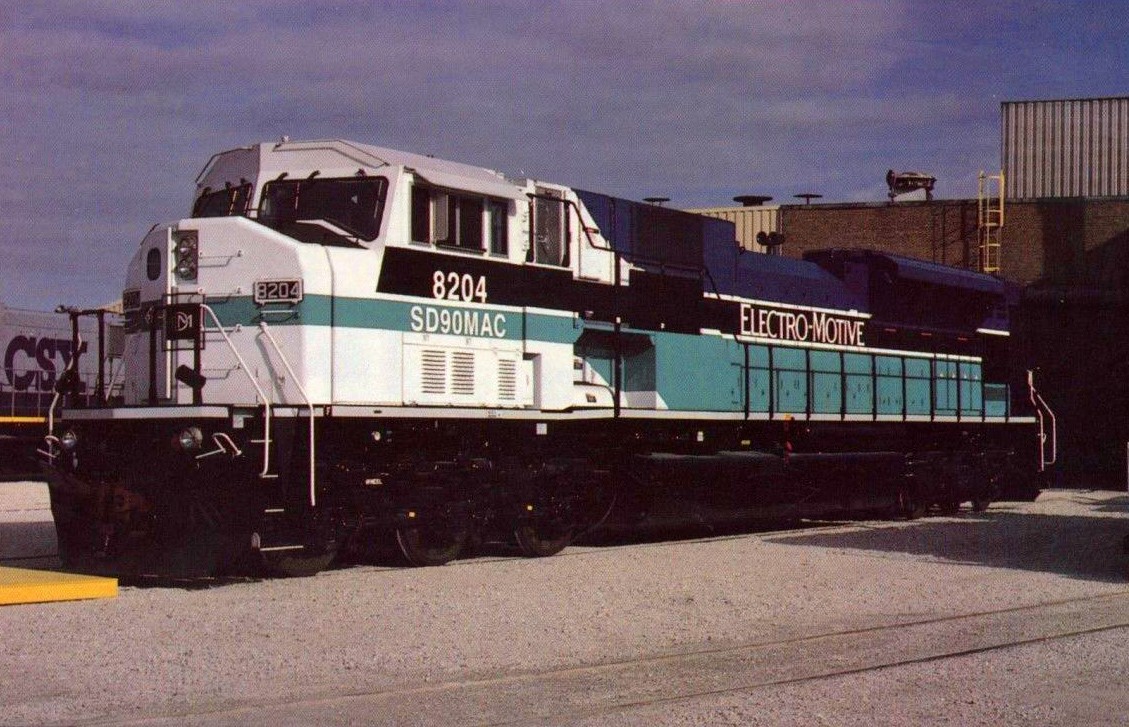
Meanwhile over at GE, they introduced the new alternating current model, the AC4400CW, which had a 4400hp GE 7FDL-16, a turbocharged V16 4-stroke that was loosely derived from a Cooper-Bessemer engine and was of the same engine family as the engines used in the Universal Series, Dash-7s, Dash-8s and Dash-9s. Unlike EMD, GE decided to jump completely over the 5000hp mark and go straight to 6250hp. But, like EMD, GE did not trust their old engine family at that power level and was developing a new engine, the GEVO-16, for high-horsepower applications. Also, similar to EMD, the new engine was having troubles in development, so GE offered a convertible locomotive, the AC4460CW. They would be delivered with the old 4400hp 7FDL and then once the GEVO-16 was ready they could be converted to the 6250hp spec. UP was the only purchaser of the AC4460CWs, and like their SD9043MACs, none of them would ever be converted over.

When the true AC6000CWs hit the market, it was modestly more successful than the SD90MAC-Hs, selling 117 to CSX and 81 to UP (along with UP's 106 convertibles). But it too was plagued with reliability troubles from the rushed engine program, although not as bad as the EMDs. While many AC6000Ws are still on the rails today, over 80% of them have been downrated to 4400hp spec, leaving very few true 6250hp locomotives in operation.

Since then, both manufacturers have scaled back to 4400hp models, the SD70 and its many many variants from EMD and the ES44AC from GE, and have not offered a higher power model. Why did the 6000hp market fail so badly? For starters, the rushed development cycles and reliability issues that resulted really hurt their chances. Also, railroads learned that if you run 6 3000hp locomotives on a train and one fails, you still have 15,000hp to likely get you home. When you run 3 6000hp locomotives and one fails, you now only have 12,000hp, which might not be enough to get the job done. Redundancy is a good thing. Also, 6000hp locomotives have much less operational flexibility. You can M.U. a bunch of lower powered engines together to pull a huge train and then run a single one in local freight service, but running a 6000hp locomotive to move 4 or 5 cars to a local customer is hideously inefficient. And finally, fuel consumption and looming emissions concerns would have done them in, as manufacturers even now struggle to get their 4400hp units to meet Tier-4 emissions standards.
You'll need to log in to post.